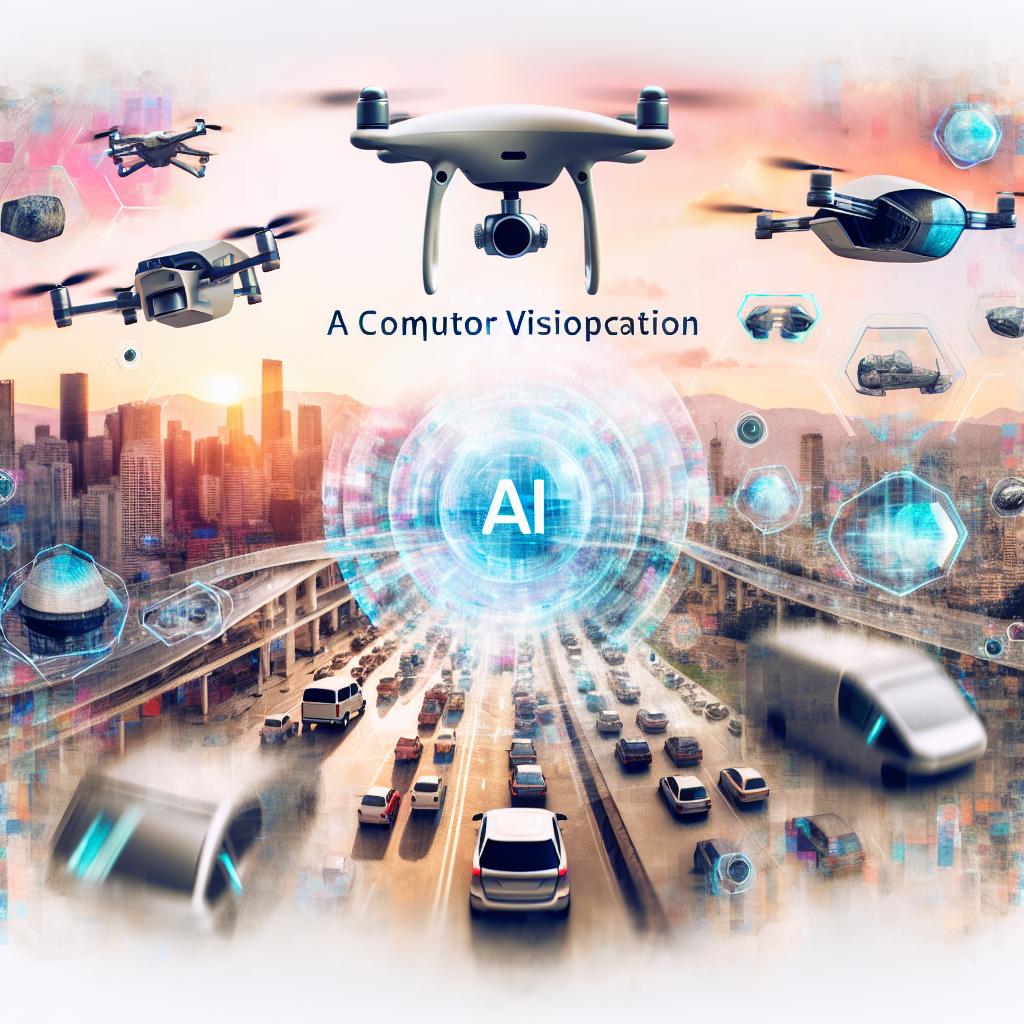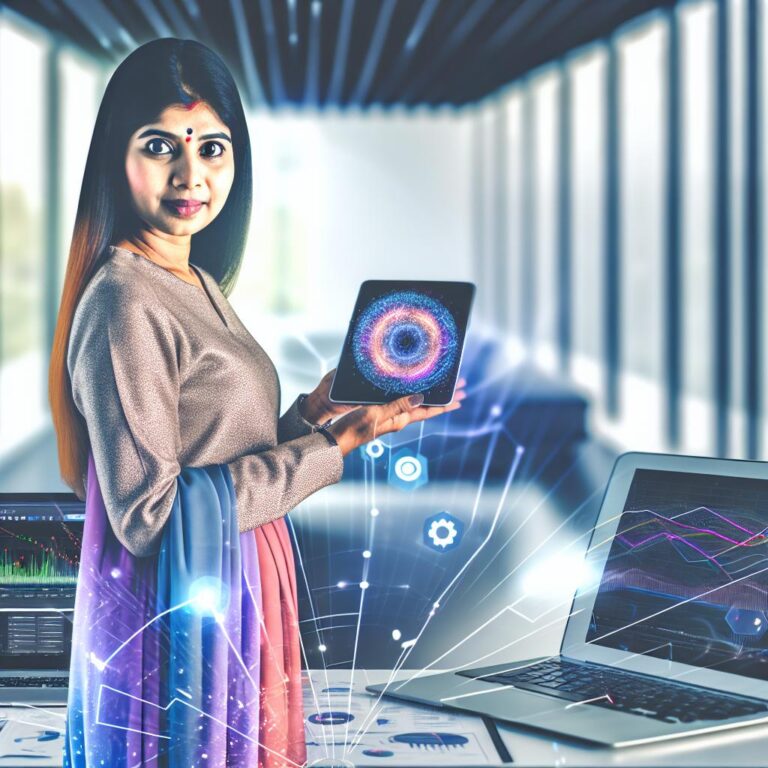
- AI in Image Recognition: AI enhances image recognition with neural networks like CNNs, enabling quick, accurate object and pattern identification.
- AI in Computer Vision: AI advances computer vision by automation, fast data processing, and leading innovations like self-driving cars.
- Recent AI Advances: AI improves object recognition speed, aids in medical diagnoses, detects fraud in finance, and boosts car safety.
- AI Applications in Vision: AI assists in healthcare (early disease detection), finance (fraud prevention), retail (product tracking), and smart cities (traffic management).
- AI in Robotics: AI vision enables robots in manufacturing, delivery, and space exploration to navigate and perform tasks more effectively.
- Challenges and Ethics: AI vision systems face integration challenges, require massive data and skilled talent, and raise privacy and bias concerns.
- Legal Implications: New regulations focus on data privacy and transparency, impacting compliance for AI firms.
- Future Trends: Advances include enhanced neural networks, autonomous vehicle AI, and healthcare diagnosis improvements. AI vision improves accuracy and error reduction across industries.
- Industry Adoption: AI vision is prevalent in retail, agriculture, healthcare, and automotive sectors, though challenges like costs and privacy remain.
Imagine a world where your smartphone sees as clearly as you do. That’s the magic AI brings to computer vision today. AI is transforming how devices recognize images, decipher scenes, and even anticipate what comes next. It’s more than cool tech—it’s reshaping games, apps, and how we interact with digital realms. Dive into the role of AI in computer vision and understand how this tech changes everything you know about your mobile gaming world.
How is AI Transforming Computer Vision?

What Role Does AI Play in Image Recognition?
AI is like magic for computers seeing images. Image recognition lets computers find and tag objects, faces, and places. Thanks to AI, this process has become super quick and smart. Have you ever tagged a friend on social media photos? That’s image recognition in action.
AI boosts image recognition by using neural networks. These networks are special because they learn from lots of pictures. They get better with each new image they study, just like how kids learn. Models like Convolutional Neural Networks (CNNs) power this learning. CNNs can tell the difference between a dog and a cat by analyzing their shapes and patterns.
AI technologies also improve image recognition by breaking images into simple parts. By doing this, computers can focus on many details at once. This method is crucial for apps that need to find tiny signs of diseases in medical scans.
Smartphones use AI to unlock with a look. AI-powered image recognition can spot faces even if the light is low. Cameras use AI to enhance picture quality, adjusting colors as they happen. These are just a few ways AI makes image recognition work better every day.
How Does AI Drive the Development of Computer Vision?
AI plays a huge role in growing computer vision power. It helps create smarter apps to see, understand, and act. This tech leads to cool new ideas for games, gadgets, and more.
Computer vision shows its importance by bringing us self-driving cars. These cars can “see” the road and make decisions while driving. AI helps them spot traffic signs, pedestrians, and other cars, allowing safer travel. Computer vision systems are becoming faster. They process visual data quickly. This means computers, robots, and other devices can act and learn without delay.
One key point AI introduces is automation. Tasks that are routine, such as checking product quality in factories, now happen without human help. Machines can look at many items quickly, dismissing any that don’t fit quality controls.
AI’s role in computer vision also brings innovation. By analyzing visual data, businesses find new ways to improve products and satisfy customers.
What Are the Recent Advancements in AI for Vision Tasks?
AI in vision tasks is improving rapidly. Great strides in AI improve vision systems’ speed and accuracy. These systems can now recognize objects faster than ever before. With AI, computers now understand emotions in faces and guess people’s ages too.
In healthcare, AI helps doctors diagnose diseases from medical images. Systems look for patterns and details a human eye might miss. For example, detecting lung lesions can prevent serious illnesses early. This makes a life-saving impact in medicine.
AI’s vision systems also play a significant role in finance. They help catch fraud by watching transactions and spotting odd patterns. This way, financial services can detect and stop scams quickly. Automated systems using AI now solve disputes more efficiently.
AI systems improve car safety with advanced collision warning and lane-keeping support. These systems depend on fast, precise image processing. This tech assists in shaping the future of autonomous vehicles.
With each AI advancement, new tools and applications emerge in many fields. From entertainment to automation, the power of vision tasks continues to grow. AI provides the drive and accuracy needed to push innovation. AI’s scale and speed help scientists explore fresh possibilities. Businesses discover enhancements that fuel growth. AI in vision tasks is key for future-ready solutions that are smarter, faster, and more efficient.
What Are the Practical Applications of AI in Vision?

How is AI Utilized in AI-Based Vision Applications?
AI works as a game-changer in many fields, making our day-to-day life better. In healthcare, doctors use AI to spot diseases like cancer early. It acts like an extra set of eyes, but even sharper. For instance, AI systems help radiologists check X-rays and scans swiftly, catching signs that a human might miss. Read more here.
In the world of finance, banks use AI to track down tricky fraud. AI checks transactions fast, identifying weird patterns or unusual spending that might signal fraudulent activity. This tech protects both the bank and its customers.
Spy out how AI improves shopping. Retailers use it to identify products on shelves, track where shoppers go, and decide how to display items better. It gives shops keen insights, leading to happier customers and better sales.
AI shines in smart cities too. Cameras with AI can spot traffic jams or accidents and suggest the best routes. This helps to keep cars moving smoothly and city life more manageable.
Can You Share Success Stories of AI in Vision?
Let me take you to the world of automobiles. AI is guiding self-driving cars by improving how they sense and react to the world. Tesla, for example, uses computer vision to help cars understand road signs, avoid other vehicles, and even see pedestrians.
Another great success story is in agriculture. Farmers now use drones powered by AI to take images of their crops. These images can show which parts of a farm need water or where plants might be sick.
Have you ever noticed those smart security systems at airports? They use AI to recognize faces quickly, ensuring that only the right people access certain areas. This tech keeps places safer and secure.
AI even helps in fashion. Online shops use it to suggest outfits based on what shoppers browse. This makes buying clothes online more personalized and fun.
What is the Role of AI in Robotics Through Computer Vision?
AI breathes new life into robots. Imagine robots in factories. They need to see, understand, and sort parts fast. Thanks to AI vision, these robots put together phones or cars with more accuracy than humans.
In the delivery field, robots move right to your doorstep. Companies like Amazon are starting to use skits that navigate city streets or fly drones to reach remote areas. AI helps these robots see where they are going, avoiding obstacles like pets or children.
Exploring new worlds sounds exciting, right? Robots guided by AI vision are used in space missions to navigate rocky terrains and gather samples. These robotic explorers do tasks that are too risky for humans.
In the world of AI, one size does not fit all. Different jobs need different kinds of vision tech. AI helps tailor robots to do specific tasks well, from making a cake to building a house. Understanding how AI makes robots more useful and smarter is thrilling, no doubt!
What Challenges and Limitations Exist in AI Vision Implementations?

What Are the Challenges in Implementing AI in Vision?
AI in vision systems faces big challenges. First, the integration with existing systems is tough. Much of the current tech isn’t ready for such advanced processing. AI needs huge data and fast hardware, which many don’t have. A lack of skilled workers is another issue. Training and deploying AI models need experts, which are scarce.
To solve these challenges, we look at new strategies. One way is using cloud computing to process big datasets. This helps those lacking in local resources. Collaborative efforts also work well. Companies and universities team up to train skilled workers. They focus on sharing knowledge and tools. Such efforts aim to smooth the way forward for AI in vision.
Are There Ethical Considerations in AI and Computer Vision?
Ethical issues come up rapidly in AI computer vision systems. Privacy is a key concern. Many systems gather lots of data about individuals’ lives. This can lead to unwanted surveillance, intruding on personal spaces. Biases in AI models are also a problem. If not built with care, AI models may show favoritism. They could misrepresent certain groups or decisions.
To address these concerns, ethical frameworks are evolving. Teams work to create transparent systems. They ensure users know how their data gets used. Bias can be reduced by diversifying training data. Including different perspectives helps robots be fair. The public and private sectors must work together to see these frameworks succeed. Their joint efforts aim to increase trust and safety.
How Do Legal Implications Affect AI in Vision Technology?
Legal rules shape AI vision tools in powerful ways. As AI technology grows, laws struggle to keep up. Rules about data gathering and privacy need updates. They must reflect the new capabilities of AI systems. This includes how information is stored and shared. Compliance is a headache for many businesses. They face fines if they fail to follow emerging policies.
Looking to the future, legal trends continue to change. Governments push for stricter rules. They work to safeguard privacy and fair use. We expect new laws to demand transparent AI processes. Companies need to be proactive. They must adapt to avoid legal troubles and embrace ethical practices. Preparing for these changes is a smart way to reduce risks. AI companies will likely thrive if they stay ahead of the legal curve.
What Does the Future Hold for AI-Enhanced Vision?

What Future Trends are Emerging in AI Vision?
AI-enhanced vision is growing fast, with new trends emerging each year. One major trend is the development of more advanced neural networks. These networks help machines see and understand the world much like a human does. Believe it or not, soon your fridge might let you know you are out of milk by recognizing the empty space!
Another exciting trend is AI in autonomous vehicles. These vehicles need to “see” and make decisions about moving in traffic, and AI is crucial for that. Future cars will be smarter and safer, reducing accidents.
AI is also making waves in healthcare. With AI, doctors can spot diseases faster and more accurately using image scans. This leads to better treatment and saves lives. AI helps detect things that are very small or hard to see with the naked eye.
As AI continues to improve, it will be used in even more daily applications. Expect to see AI in security cameras, identifying suspicious behavior before it becomes a big issue. Many industries are investing in AI vision, leading to innovations we can’t yet imagine.
How is AI Affecting the Accuracy of Computer Vision?
AI has made computer vision more accurate than ever before. Machine learning models learn from a ton of data, getting smarter with each use. This constant learning helps AI recognize patterns and details quickly. In real applications, this accuracy is crucial.
Take facial recognition, for example. AI can now distinguish between identical twins! This is because their models check countless small details.
AI boosts accuracy in areas where precision is vital. In medicine, AI’s accuracy helps doctors find things like lung lesions early. Caught early, treatment can be less invasive and more effective.
The improvements in AI’s accuracy mean fewer mistakes. In industries like finance, this helps in quickly flagging suspicious activities. AI can handle complex patterns much faster than humans, spotting fraud before it causes big problems. AI’s role in increasing accuracy is clear—it reduces errors and enhances results across fields.
How Are Industries Adopting AI Vision Systems?
Industries across the board are opening their doors to AI vision systems. In retail, AI helps analyze customer behavior, improving sales and enhancing shopping experiences. Stores can offer personalized services based on your shopping habits.
In agriculture, AI drones monitor crops and assess plant health. This technology creates better yields and reduces waste. Farmers can make informed choices, knowing exactly what a crop needs to thrive.
Healthcare is another major field embracing AI vision. Hospitals use AI to help in diagnosis, providing a valuable second opinion to doctors. This reduces the risk of misdiagnosis and helps in managing patient loads more efficiently.
The automotive sector leads the charge for AI adoption with self-driving cars. These cars rely heavily on AI vision for safety and navigation. By identifying obstacles and pedestrians, they promise to change how we travel.
Adopting AI comes with challenges. Many companies face high initial costs and require skilled talent to operate these systems. There are also concerns about privacy and security. However, these systems promise great returns by increasing efficiency and reducing manual errors. Companies are tapping into AI’s potential, eager to stay competitive and innovative in this digital age.
Conclusion
We’ve explored how AI is reshaping computer vision, from enhancing image recognition to driving innovative applications. AI advances are boosting accuracy and speed, offering practical solutions in many fields, like robotics. However, challenges like ethical concerns and legal issues persist. Solutions are evolving, promising exciting trends in future AI usage. As AI continues to refine vision tech, we can expect even more transformative impacts. Stay connected with these developments to maximize your gaming experiences and explore new opportunities in this ever-evolving landscape.






